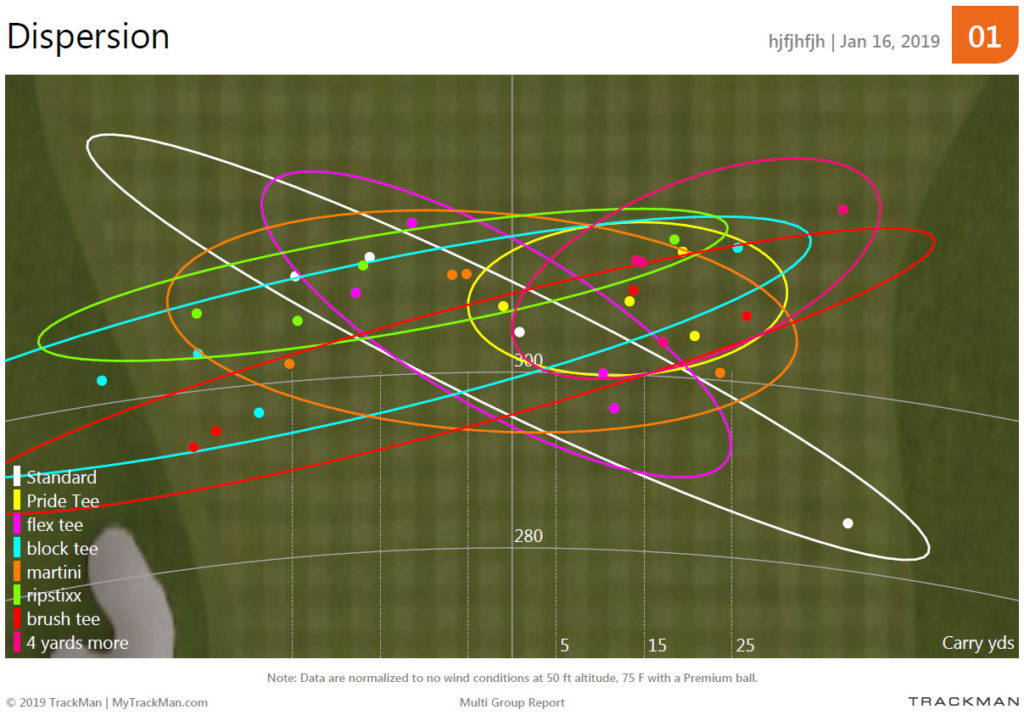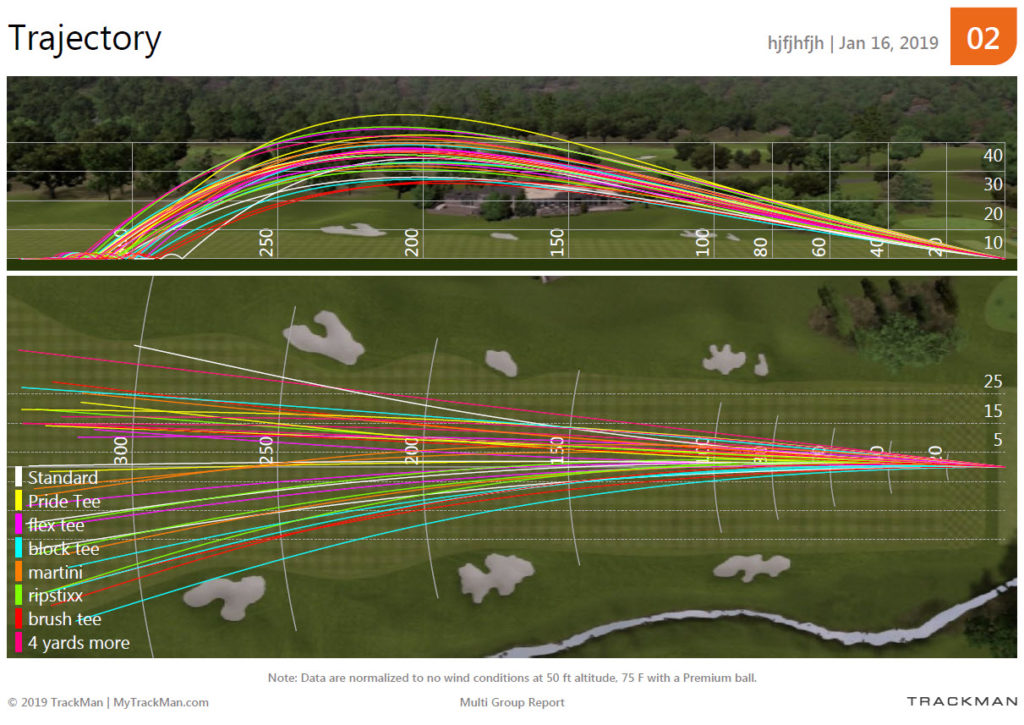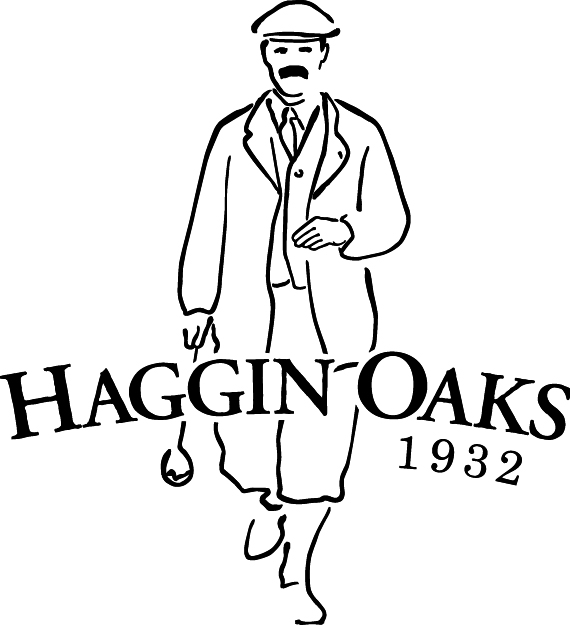Question:
How important is the type of tee used?
Hypothesis:
We believe the sample size is too small and the effects of different tees are too indistinguishable that no measurable variance will be found between different tee types.
Materials:
- “Normal” Length Wooden Tee (2 ⅛” )
- Pride Professional Tee System Step Tee (3 ¼”)
- Flex Tee (3”)
- Block Head Tee (3”)
- Martini Tee (3 ¼“)
- RipStixx Tee (3 ¼”)
- XLT Jumbo BRUSH-T (3 ⅛”)
- 4 Yards More Golf Tee (3 ¼”)
- 32 Srixon Range Balls
- Titleist TS3 10.5 Degree
- TrackMan Launch Monitor System
Research:
Many of the tees used promise additional yardage and increased consistency on a drive. The largest promised performance increase is by the “4 Yards More Golf Tee” which promises 3.9 additional yards compared to a traditional tee. This amount of change is relatively small and will make accurate testing very difficult.
Procedure:
This procedure was created in order to test the importance a golf tee plays on a drive. We will be testing for distance and consistency. To begin, a scratch golfer will go to the Haggin Oaks Player Performance Studio and hit 2 Srixon Range Balls with each tee. Then, the golfer will hit the second round of 2 Srixon Range Balls each, for a total of 4 shots per tee and 32 shots total. The TrackMan report will supply the statistics for distance and consistency by using Doppler Radar. These statistics will be analyzed and a determination made on the importance of tees. We will use a standard wooden tee, measuring 2 ⅛” in length as the control. The tested tees will vary in length from 3” to 3 ¼”. This control will be used to compare the tees.
Results:
The RipStixx tee traveled the farthest at an average of 335.5 yards in total, followed closely by the 4 Yards More tee which traveled an average of 335.3 yards. Meanwhile, the Flex tee traveled the shortest at an average of 325.9 yards. The Pride tee achieved the largest average height in flight at 124 feet. In comparison, the Brush-T achieved the lowest height at an average of 95 feet. Our golfer claimed the Brush-T was coming off the club much lower than he expected. However, he was unsure whether this was because it “Didn’t look good looking down at” or if it physically reduced the height.











Analysis and Conclusion
The maximum difference between the average distance of any two tees was 9.6 yards. While this is a substantial difference, the limited size of our sampling makes it difficult to objectively defend our results. We believe that with a larger sample size from a multitude of golfers and analyzing a variety of factors including size of tee, a better comparison between tees could be made. For now, we are left to interpret the data we collected in this experiment. This data suggests that while a different tee may impact your swing, it will only impact it by a few yards most likely. The placebo affect may impact the tees a golfer prefers as well. A tee that looks better will most likely give a golfer the confidence to perform better. In our case, the Brush-T was our golfer’s least favorite looking and it coincidentally performed poorly. Overall, we will allow the viewer to interpret this data how they see fit. We here at Haggin Oaks, recommend that a golfer continues to utilizes the tee they feel confident with, as a tee’s maximum impact on a swing is small.

